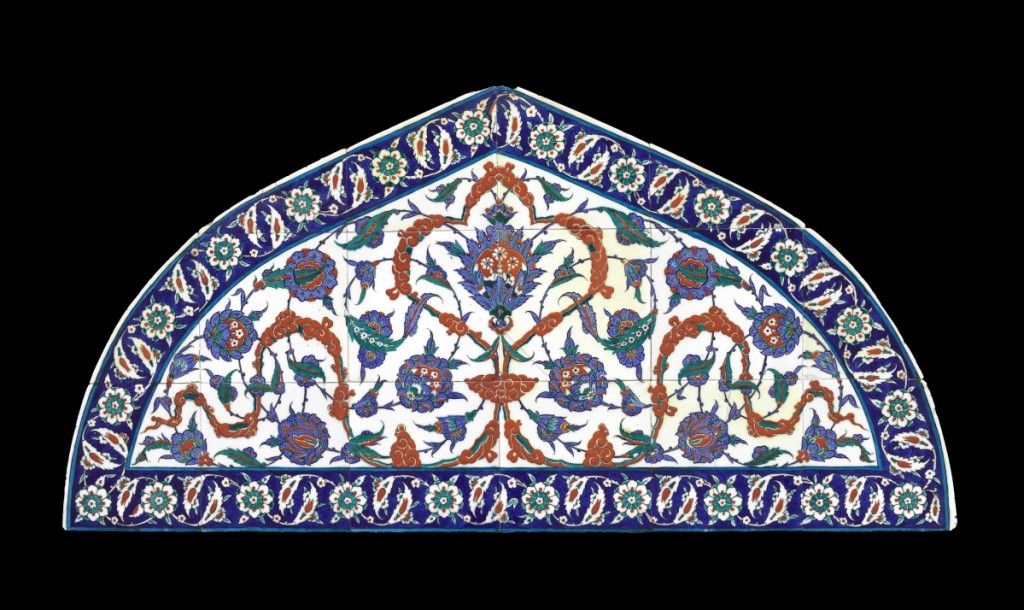
Tile Lunette, 1570–75 Turkey (Iznik), Fritware with polychrome decoration under transparent glaze, bequest of Mrs Martin Brimmer, photograph ©Museum of Fine Arts, Boston.
BOSTON – Reinstalled and reinterpreted, the new Arts of Islamic Cultures Gallery at the Museum of Fine Arts, Boston (MFA) is designed to expand how visitors see and understand the diverse arts of Islamic communities. The thematic installation of 69 objects is divided into distinct vignettes that reflect the richness of artistic traditions that evolved over 13 centuries, from Spain to India and beyond. The culmination of eight years of community consultation and engagement, the gallery represents a range of cultures, geographies and time periods, many of which vary widely. In the space, Arabic calligraphy is explored as an art form that is integral to all Islamic cultures, while the visual legacy of Ottoman Turkey and Mughal India are separately examined as unique traditions in their own right. In addition to historical objects, several contemporary works are included, one accompanied by a multimedia display where visitors can hear directly from the artist. Visitors can also listen to audio recordings of Qur’an recitation created in partnership with the Islamic Society of Boston Cultural Center, one of many religious, artistic and scholarly communities whose members have contributed to the creation of this gallery.
“In the preparation of this gallery, rather than following a single chronological or geographic narrative, we created thematic spaces that emphasize the diversity and multiplicity of voices and traditions,” said Laura Weinstein, Ananda Coomaraswamy curator of South Asian and Islamic art at the MFA. “We hope visitors will leave the gallery with a richer knowledge of Islamic cultures, and a desire to learn more about the past as well as about contemporary Muslim communities here in Boston and around the world.”
The MFA’s collection of Islamic art encompasses works from the Middle East, North Africa and South Asia, as well as works created across the globe within Islamic communities or societies. Some of the objects served a religious need, but many are for secular use. The new gallery contains eight distinct spaces that emphasize various facets of the arts of Islamic cultures and reflect different ways of approaching them.
Two sections focus on religious themes, both of which mix objects of different media and time periods. Focusing on Arabic calligraphy and on the idea of light as a symbol for God, these groupings of works explore threads that tie together many Islamic cultures. Ceramics and textiles on view hint at the dazzling colors and patterns that visually unified the vast empire. Made between the Twelfth to the Eighteenth Century, the objects include examples made in China for the Middle Eastern market and others that were made in the Middle East in response to antique and contemporary Chinese wares.
Additional groupings of objects are dedicated to a specific medium: one focuses on arts of the book, while another features highlights of the MFA’s Islamic textile collection. Other sections of the gallery tell the story of a single extraordinary work of art.
The gallery also features objects reflecting that societies in which Islam is a major religion are, and have always been, religiously and ethnically diverse.
The Museum of Fine Arts, Boston is at 465 Huntington Avenue. For information, 617-267-9300 or www.mfa.org.











